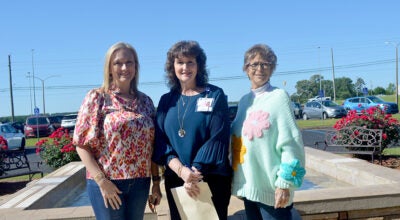Pike County EMA director attends conference
Published 3:00 am Saturday, July 4, 2015
A month into hurricane season, Pike County Emergency Management Director Jeanna Barnes recently participated in the governor’s preparedness workshop for EMA directors and first responders.
“The conference was a combination of the Alabama Association of Emergency Managers’ summer conference, the Central Gulf States Hurricane Conference and the Governor’s Preparedness Workshop,” Barnes said. “Any time you are able to be surrounded by your colleagues, it provides the opportunity to share information and strategies on what you are doing and what they are doing. These conferences help us to come together and discuss such topics as well as modern techniques, strategies and technology that is available to emergency managers but to the public as well.”
Barnes said Gov. Robert Bentley was on hand and spoke mainly on emergency management strategies and disaster preparedness.
“Bentley shared lessons the state has learned from the historical tornado outbreak on April 27, 2011, and the importance in disaster preparedness,” Barnes said. “He stressed how much he cares about the safety and wellbeing of each Alabamian and the need to continue to help them to be prepared for any disasters we may face in Alabama.”
Barnes said although it was just a yearly conference, the meeting helps build a network that is used year-round.
“Although we are all directors for our specific counties, it is vital to the safety of our citizens that we continually learn from each other, sharpen our skills and take the necessary steps to become a positive influence not only our country but our state in the areas of disaster preparedness,” Barnes said. “Unfortunately, we are a society that is too easily find ourselves complacent. Disasters can hit us with no notice, and if we aren’t prepared for the impacts, they will be felt even greater. We, as emergency managers, have to be at the forefront of educating the public not only on how to be prepared, but we have to answer the who, the what and the where of disasters as well. We can’t simply tell them why to be prepared, we have to tell them what they are preparing for.”





